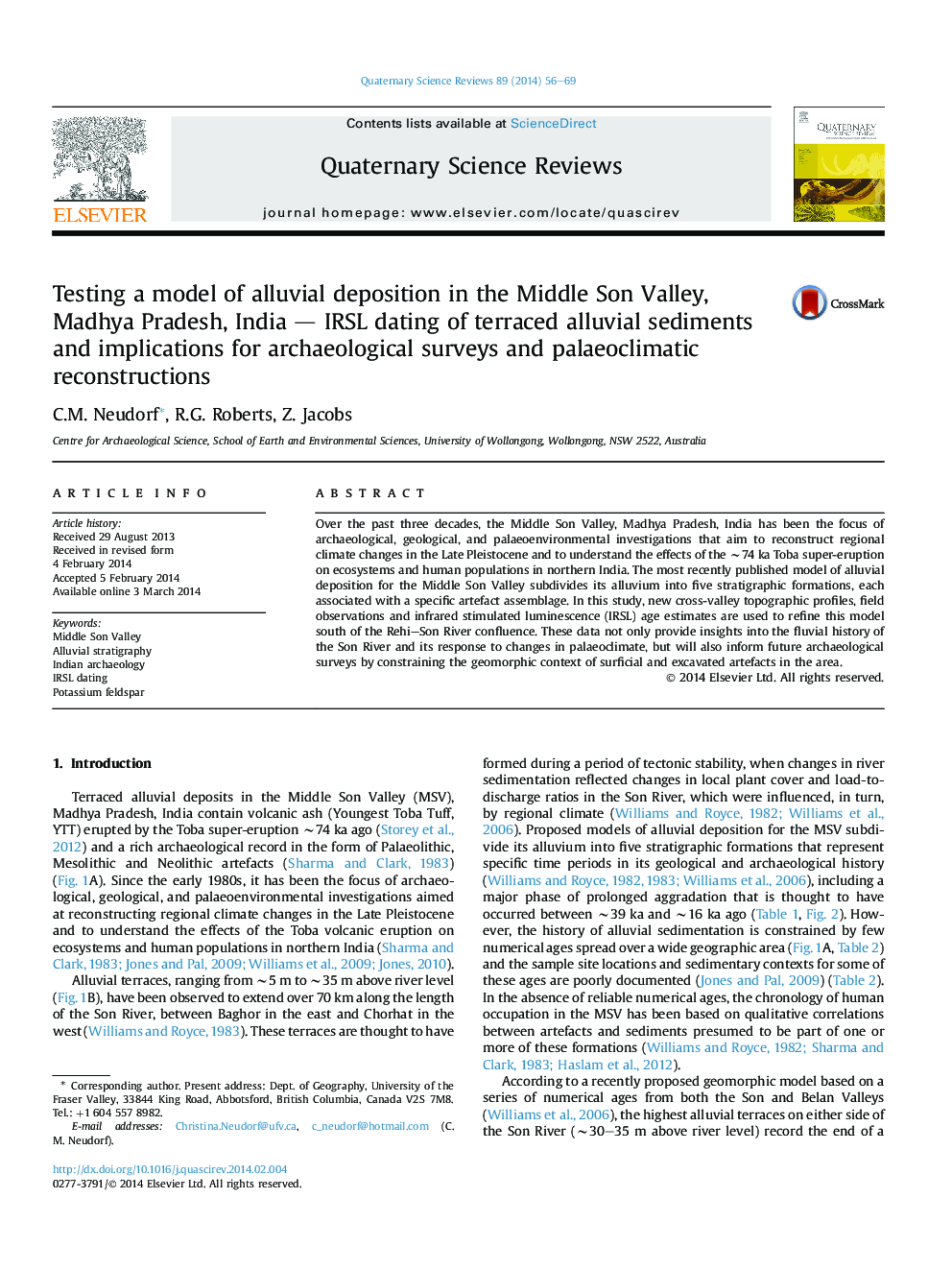| Article ID | Journal | Published Year | Pages | File Type |
|---|---|---|---|---|
| 6446419 | Quaternary Science Reviews | 2014 | 14 Pages |
Abstract
Over the past three decades, the Middle Son Valley, Madhya Pradesh, India has been the focus of archaeological, geological, and palaeoenvironmental investigations that aim to reconstruct regional climate changes in the Late Pleistocene and to understand the effects of the â¼74Â ka Toba super-eruption on ecosystems and human populations in northern India. The most recently published model of alluvial deposition for the Middle Son Valley subdivides its alluvium into five stratigraphic formations, each associated with a specific artefact assemblage. In this study, new cross-valley topographic profiles, field observations and infrared stimulated luminescence (IRSL) age estimates are used to refine this model south of the Rehi-Son River confluence. These data not only provide insights into the fluvial history of the Son River and its response to changes in palaeoclimate, but will also inform future archaeological surveys by constraining the geomorphic context of surficial and excavated artefacts in the area.
Related Topics
Physical Sciences and Engineering
Earth and Planetary Sciences
Geology
Authors
C.M. Neudorf, R.G. Roberts, Z. Jacobs,
